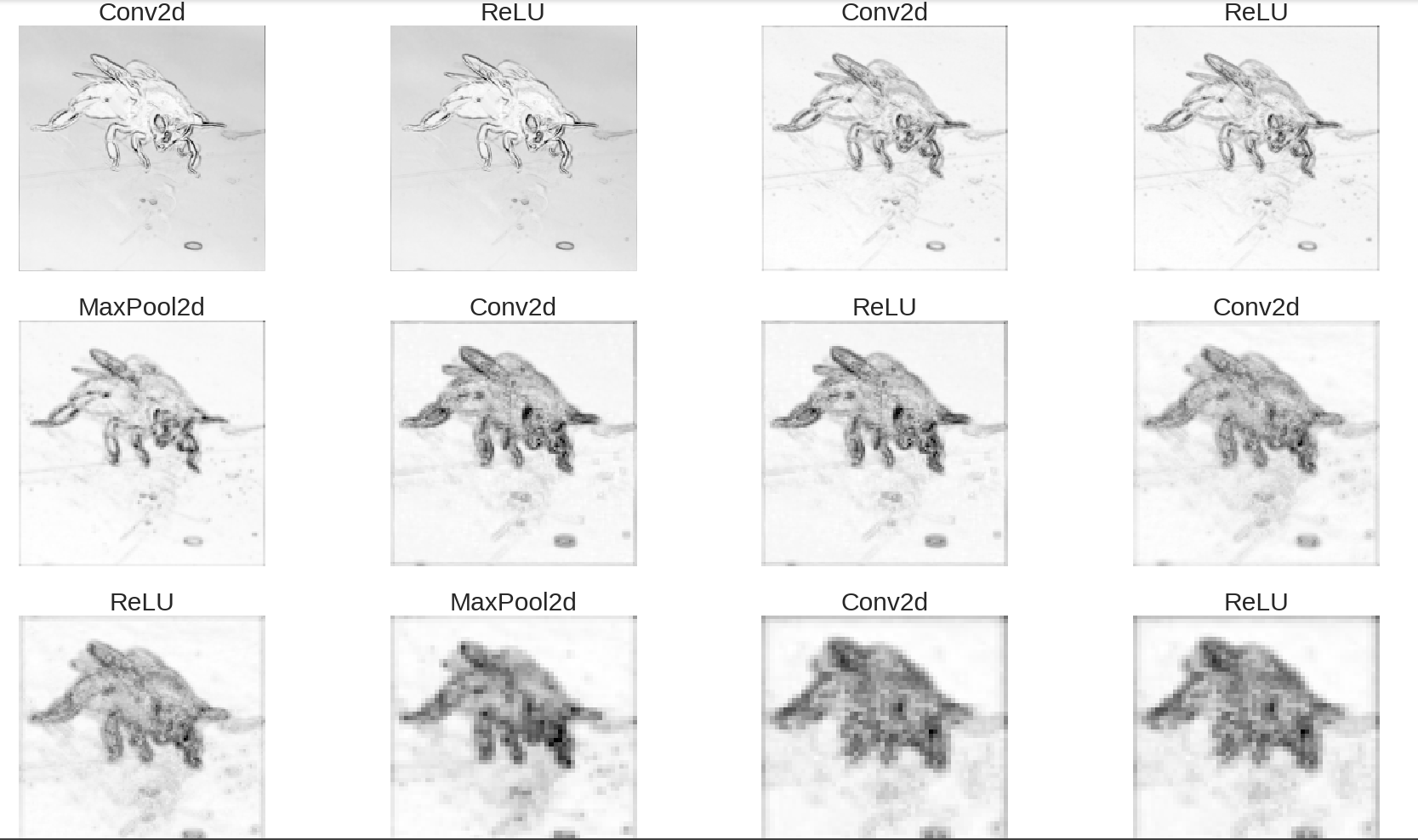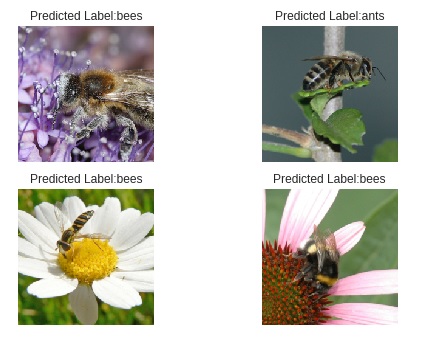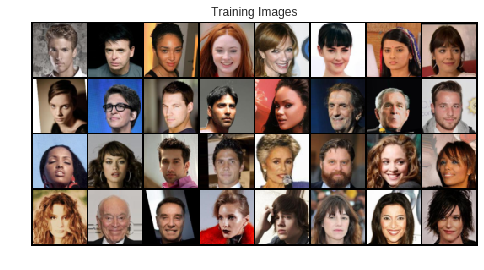Pytorch Tutorial, Pytorch with Google Colab, Pytorch Implementations: CNN, RNN, DCGAN, Transfer Learning, Chatbot, Pytorch Sample Codes
This repo aims to cover Pytorch details, Pytorch example implementations, Pytorch sample codes, running Pytorch codes with Google Colab (with K80 GPU/CPU) in a nutshell.
 Fast Pytorch Tutorial
Fast Pytorch Tutorial
 Fast Torchvision Tutorial
Fast Torchvision Tutorial
 Pytorch with Google Colab
Pytorch with Google Colab Pytorch Example Implementations
Pytorch Example Implementations [Colab],
[Colab],  [Notebook]
[Notebook]  [Colab],
[Colab],  [Notebook]
[Notebook] [Colab],
[Colab],  [Notebook]
[Notebook] [Colab],
[Colab],  [Notebook]
[Notebook] [Colab],
[Colab],  [Notebook]
[Notebook] [Colab],
[Colab],  [Notebook]
[Notebook] [Colab],
[Colab],  [Notebook]
[Notebook] [Colab],
[Colab],  [Notebook]
[Notebook] [Colab],
[Colab],  [Notebook]
[Notebook] [Colab],
[Colab],  [Notebook]
[Notebook] Pytorch Sample Codes
Pytorch Sample CodesIt’s python deep learning framework/library that is developed by Facebook. Pytorch has own datastructure that provides automatic differentiation for all operations on Tensors.
Important keys: torch.Tensor, .requires_grad, .backward(), .grad, with torch.no_grad().
Pytorch CheatSheet:  Details
Details
 Details
Details
torch.nn.RNN(*args, **kwargs)torch.nn.LSTM(*args, **kwargs)torch.nn.GRU(*args, **kwargs)torch.nn.RNNCell(input_size, hidden_size, bias=True, nonlinearity='tanh')torch.nn.LSTMCell(input_size, hidden_size, bias=True)torch.nn.GRUCell(input_size, hidden_size, bias=True)torch.nn.Linear(in_features, out_features, bias=True)torch.nn.Bilinear(in1_features, in2_features, out_features, bias=True)torch.nn.Conv1d(in_channels, out_channels, kernel_size, stride=1, padding=0, dilation=1, groups=1, bias=True)torch.nn.Conv2d(in_channels, out_channels, kernel_size, stride=1, padding=0, dilation=1, groups=1, bias=True)torch.nn.Conv3d(in_channels, out_channels, kernel_size, stride=1, padding=0, dilation=1, groups=1, bias=True)torch.nn.ConvTranspose1d(in_channels, out_channels, kernel_size, stride=1, padding=0, output_padding=0, groups=1, bias=True, dilation=1)torch.nn.ConvTranspose2d(in_channels, out_channels, kernel_size, stride=1, padding=0, output_padding=0, groups=1, bias=True, dilation=1)torch.nn.ConvTranspose3d(in_channels, out_channels, kernel_size, stride=1, padding=0, output_padding=0, groups=1, bias=True, dilation=1)torch.nn.Unfold(kernel_size, dilation=1, padding=0, stride=1)torch.nn.Fold(output_size, kernel_size, dilation=1, padding=0, stride=1)
 Details
Details
torch.optim.Adadelta(params, lr=1.0, rho=0.9, eps=1e-06, weight_decay=0)torch.optim.Adagrad(params, lr=0.01, lr_decay=0, weight_decay=0, initial_accumulator_value=0)torch.optim.Adam(params, lr=0.001, betas=(0.9, 0.999), eps=1e-08, weight_decay=0, amsgrad=False)torch.optim.SparseAdam(params, lr=0.001, betas=(0.9, 0.999), eps=1e-08)torch.optim.Adamax(params, lr=0.002, betas=(0.9, 0.999), eps=1e-08, weight_decay=0)torch.optim.ASGD(params, lr=0.01, lambd=0.0001, alpha=0.75, t0=1000000.0, weight_decay=0)torch.optim.LBFGS(params, lr=1, max_iter=20, max_eval=None, tolerance_grad=1e-05, tolerance_change=1e-09, history_size=100, line_search_fn=None)torch.optim.RMSprop(params, lr=0.01, alpha=0.99, eps=1e-08, weight_decay=0, momentum=0, centered=False)torch.optim.Rprop(params, lr=0.01, etas=(0.5, 1.2), step_sizes=(1e-06, 50))torch.optim.SGD(params, lr=<required parameter>, momentum=0, dampening=0, weight_decay=0, nesterov=False) # stochastic gradient descenttorch.optim.lr_scheduler.LambdaLR(optimizer, lr_lambda, last_epoch=-1)torch.optim.lr_scheduler.StepLR(optimizer, step_size, gamma=0.1, last_epoch=-1)
 Details
Details
torch.nn.L1Loss(size_average=None, reduce=None, reduction='mean') # L1 Losstorch.nn.MSELoss(size_average=None, reduce=None, reduction='mean') # Mean square error losstorch.nn.CrossEntropyLoss(weight=None, size_average=None, ignore_index=-100, reduce=None, reduction='mean')torch.nn.CTCLoss(blank=0, reduction='mean') #Connectionist Temporal Classification losstorch.nn.NLLLoss(weight=None, size_average=None, ignore_index=-100, reduce=None, reduction='mean') #negative log likelihood losstorch.nn.PoissonNLLLoss(log_input=True, full=False, size_average=None, eps=1e-08, reduce=None, reduction='mean')torch.nn.KLDivLoss(size_average=None, reduce=None, reduction='mean') # Kullback-Leibler divergence Losstorch.nn.BCELoss(weight=None, size_average=None, reduce=None, reduction='mean') # Binary Cross Entropytorch.nn.MarginRankingLoss(margin=0.0, size_average=None, reduce=None, reduction='mean')
 Details
Details
torch.nn.MaxPool1d(kernel_size, stride=None, padding=0, dilation=1, return_indices=False, ceil_mode=False)torch.nn.MaxPool2d(kernel_size, stride=None, padding=0, dilation=1, return_indices=False, ceil_mode=False)torch.nn.MaxPool3d(kernel_size, stride=None, padding=0, dilation=1, return_indices=False, ceil_mode=False)torch.nn.MaxUnpool2d(kernel_size, stride=None, padding=0) # Computes a partial inverse of MaxPool2dtorch.nn.AvgPool2d(kernel_size, stride=None, padding=0, ceil_mode=False, count_include_pad=True)torch.nn.FractionalMaxPool2d(kernel_size, output_size=None, output_ratio=None, return_indices=False, _random_samples=None)torch.nn.LPPool2d(norm_type, kernel_size, stride=None, ceil_mode=False) # 2D power-average poolingtorch.nn.AdaptiveMaxPool2d(output_size, return_indices=False)torch.nn.AdaptiveAvgPool2d(output_size)
 Details
Details
torch.nn.ELU(alpha=1.0, inplace=False) # the element-wise functiontorch.nn.Hardshrink(lambd=0.5) # hard shrinkage function element-wisetorch.nn.LeakyReLU(negative_slope=0.01, inplace=False)torch.nn.PReLU(num_parameters=1, init=0.25)torch.nn.ReLU(inplace=False)torch.nn.RReLU(lower=0.125, upper=0.3333333333333333, inplace=False) # randomized leaky rectified liner unit functiontorch.nn.SELU(inplace=False)torch.nn.CELU(alpha=1.0, inplace=False)torch.nn.Sigmoid()torch.nn.Softplus(beta=1, threshold=20)torch.nn.Softshrink(lambd=0.5)torch.nn.Tanh()torch.nn.Tanhshrink()torch.nn.Threshold(threshold, value, inplace=False)torch.nn.Softmax(dim=None)torch.nn.Softmax2d()
def forward(self, x):
super(TwoLayerNet, self).__init__()self.linear1 = torch.nn.Linear(D_in, H)self.linear2 = torch.nn.Linear(H, D_out)
h_relu = self.linear1(x).clamp(min=0)y_pred = self.linear2(h_relu)return y_pred
N_batchsize, D_input, Hidden_size D_output = 64, 1000, 100, 10
epoch=500
x = torch.randn(N_batchsize, D_input)
y = torch.randn(N_batchsize, D_output)
model = TwoLayerNet(D_input, Hidden, D_output)
criterion = torch.nn.MSELoss(reduction=’sum’) # loss, mean square error
optimizer = torch.optim.SGD(model.parameters(), lr=1e-4) # optimizer, stochastic gradient descent, lr=learning rate
for t in range(epoch):
y_pred = model(x) # Forward pass
loss = criterion(y_pred, y) #print(t, loss.item())
optimizer.zero_grad() # Zero gradients,
loss.backward() # backward pass
optimizer.step() # update the weights
### Fast Torchvision Tutorial <a name="torchvisiontutorial"></a>"The torchvision package consists of popular datasets, model architectures, and common image transformations for computer vision."### ImageFolder <a name="imagefolder"></a>- If you have special/custom datasets, image folder function can be used.```Python# Exampleimagenet_data = torchvision.datasets.ImageFolder('path/to/imagenet_root/')data_loader = torch.utils.data.DataLoader(imagenet_data,batch_size=4,shuffle=True,num_workers=args.nThreads)
 Details
Details
# Some of the important functions:from torchvision import datasets, transformstransform = transforms.Compose([transforms.Resize((input_size, input_size)), transforms.ToTensor(), transforms.Normalize(mean=(0.5, 0.5, 0.5), std=(0.5, 0.5, 0.5))]) 3 Exampletorchvision.transforms.CenterCrop(size)torchvision.transforms.ColorJitter(brightness=0, contrast=0, saturation=0, hue=0)torchvision.transforms.Grayscale(num_output_channels=1)torchvision.transforms.Pad(padding, fill=0, padding_mode='constant')torchvision.transforms.RandomApply(transforms, p=0.5)torchvision.transforms.RandomCrop(size, padding=None, pad_if_needed=False, fill=0, padding_mode='constant')torchvision.transforms.RandomGrayscale(p=0.1)torchvision.transforms.RandomResizedCrop(size, scale=(0.08, 1.0), ratio=(0.75, 1.3333333333333333), interpolation=2)torchvision.transforms.RandomRotation(degrees, resample=False, expand=False, center=None)torchvision.transforms.RandomVerticalFlip(p=0.5)torchvision.transforms.Resize(size, interpolation=2)torchvision.transforms.Scale(*args, **kwargs)torchvision.transforms.LinearTransformation(transformation_matrix)torchvision.transforms.Normalize(mean, std, inplace=False) # Normalize a tensor image with mean and standard deviation.torchvision.transforms.ToTensor() # Convert a PIL Image or numpy.ndarray to tensor# Functional transforms give you fine-grained control of the transformation pipeline. As opposed to the transformations above, functional transforms don’t contain a random number generator for their parameters. That means you have to specify/generate all parameters, but you can reuse the functional transform.torchvision.transforms.functional.adjust_brightness(img, brightness_factor)torchvision.transforms.functional.hflip(img)torchvision.transforms.functional.normalize(tensor, mean, std, inplace=False) # Normalize a tensor image with mean and standard deviationtorchvision.transforms.functional.pad(img, padding, fill=0, padding_mode='constant')torchvision.transforms.functional.rotate(img, angle, resample=False, expand=False, center=None) # Rotate the image by angletorchvision.transforms.functional.to_grayscale(img, num_output_channels=1) # Convert image to grayscale version of image.
 Details
Details
torchvision.datasets.MNIST(root='data/mnist', train=True, transform=transform, target_transform=None, download=True) # with exampletorchvision.datasets.FashionMNIST(root='data/fashion-mnist', train=True, transform=transform, target_transform=None, download=True) # with exampletorchvision.datasets.KMNIST(root, train=True, transform=None, target_transform=None, download=False)torchvision.datasets.EMNIST(root, split, **kwargs)torchvision.datasets.FakeData(size=1000, image_size=(3, 224, 224), num_classes=10, transform=None, target_transform=None, random_offset=0)torchvision.datasets.CocoCaptions(root, annFile, transform=None, target_transform=None)torchvision.datasets.CocoDetection(root, annFile, transform=None, target_transform=None)torchvision.datasets.LSUN(root, classes='train', transform=None, target_transform=None)torchvision.datasets.CIFAR10(root, train=True, transform=None, target_transform=None, download=False)torchvision.datasets.STL10(root, split='train', transform=None, target_transform=None, download=False)torchvision.datasets.SVHN(root, split='train', transform=None, target_transform=None, download=False)torchvision.datasets.PhotoTour(root, name, train=True, transform=None, download=False)torchvision.datasets.SBU(root, transform=None, target_transform=None, download=True)torchvision.datasets.Flickr8k(root, ann_file, transform=None, target_transform=None)torchvision.datasets.VOCSegmentation(root, year='2012', image_set='train', download=False, transform=None, target_transform=None)torchvision.datasets.Cityscapes(root, split='train', mode='fine', target_type='instance', transform=None, target_transform=None)
 Details
Details
# model with random weightsimport torchvision.models as modelsresnet18 = models.resnet18()alexnet = models.alexnet()vgg16 = models.vgg16()squeezenet = models.squeezenet1_0()densenet = models.densenet161()inception = models.inception_v3()googlenet = models.googlenet()# with pre-trained modelsresnet18 = models.resnet18(pretrained=True)alexnet = models.alexnet(pretrained=True)squeezenet = models.squeezenet1_0(pretrained=True)vgg16 = models.vgg16(pretrained=True)densenet = models.densenet161(pretrained=True)inception = models.inception_v3(pretrained=True)googlenet = models.googlenet(pretrained=True)
torchvision.utils.make_grid(tensor, nrow=8, padding=2, normalize=False, range=None, scale_each=False, pad_value=0) # Make a grid of images.torchvision.utils.save_image(tensor, filename, nrow=8, padding=2, normalize=False, range=None, scale_each=False, pad_value=0) # Save a given Tensor into an image file
!apt-get install -y -qq software-properties-common python-software-properties module-init-tools!add-apt-repository -y ppa:alessandro-strada/ppa 2>&1 > /dev/null!apt-get update -qq 2>&1 > /dev/null!apt-get -y install -qq google-drive-ocamlfuse fusefrom google.colab import authauth.authenticate_user()from oauth2client.client import GoogleCredentialscreds = GoogleCredentials.get_application_default()import getpass!google-drive-ocamlfuse -headless -id={creds.client_id} -secret={creds.client_secret} < /dev/null 2>&1 | grep URLvcode = getpass.getpass()!echo {vcode} | google-drive-ocamlfuse -headless -id={creds.client_id} -secret={creds.client_secret}
!mkdir -p drive!google-drive-ocamlfuse driveimport syssys.path.insert(0,'drive/Fast-Pytorch/Learning_Pytorch') # Example, your drive root: 'drive/'!ls drive
%cd 'drive/Fast-Pytorch'!ls!git clone https://github.com/omerbsezer/Fast-Pytorch.git
 [Colab],
[Colab],  [Notebook]
[Notebook]  [Colab],
[Colab],  [Notebook]
[Notebook] [Colab],
[Colab],  [Notebook]
[Notebook]
class Model(nn.Module):def __init__(self):super(Model,self).__init__()self.fc1 =torch.nn.Linear(x.shape[1],5)self.fc2 =torch.nn.Linear(5,3)self.fc3 =torch.nn.Linear(3,1)self.sigmoid=torch.nn.Sigmoid()def forward(self,x):out =self.fc1(x)out =self.sigmoid(out)out =self.fc2(out)out =self.sigmoid(out)out =self.fc3(out)out= self.sigmoid(out)return out
 [Colab],
[Colab],  [Notebook]
[Notebook] [Colab],
[Colab],  [Notebook]
[Notebook]
class CNN(nn.Module):def __init__(self):super(CNN,self).__init__()# input_size:28, same_padding=(filter_size-1)/2, 3-1/2=1:paddingself.cnn1=nn.Conv2d(in_channels=1, out_channels=8, kernel_size=3, stride=1, padding=1)# input_size-filter_size +2(padding)/stride + 1 = 28-3+2(1)/1+1=28self.batchnorm1=nn.BatchNorm2d(8)# output_channel:8, batch(8)self.relu=nn.ReLU()self.maxpool1=nn.MaxPool2d(kernel_size=2)#input_size=28/2=14self.cnn2=nn.Conv2d(in_channels=8, out_channels=32, kernel_size=5, stride=1, padding=2)# same_padding: (5-1)/2=2:padding_size.self.batchnorm2=nn.BatchNorm2d(32)self.maxpool2=nn.MaxPool2d(kernel_size=2)# input_size=14/2=7# 32x7x7=1568self.fc1 =nn.Linear(in_features=1568, out_features=600)self.dropout= nn.Dropout(p=0.5)self.fc2 =nn.Linear(in_features=600, out_features=10)def forward(self,x):out =self.cnn1(x)out =self.batchnorm1(out)out =self.relu(out)out =self.maxpool1(out)out =self.cnn2(out)out =self.batchnorm2(out)out =self.relu(out)out =self.maxpool2(out)out =out.view(-1,1568)out =self.fc1(out)out =self.relu(out)out =self.dropout(out)out =self.fc2(out)return out
 [Colab],
[Colab],  [Notebook]
[Notebook]
 [Colab],
[Colab],  [Notebook]
[Notebook]
class TextGenerator(nn.Module):def __init__(self, vocab_size, embed_size, hidden_size, num_layers):super(TextGenerator, self).__init__()self.embed= nn.Embedding(vocab_size,embed_size)self.lstm=nn.LSTM(embed_size,hidden_size,num_layers, batch_first=True)self.linear=nn.Linear(hidden_size, vocab_size)def forward(self,x,h):x= self.embed(x)# h: hidden_state, c=output# x= x.view(batch_size,timesteps,embed_size)out, (h,c)=self.lstm(x,h)#(batch_size*timesteps, hidden_size)#out.size(0):batch_size; out.size(1):timesteps, out.size(2): hidden_sizeout=out.reshape(out.size(0)*out.size(1),out.size(2))# decode hidden states of all time stepsout= self.linear(out)return out, (h,c)
 [Colab],
[Colab],  [Notebook]
[Notebook]
 [Colab],
[Colab],  [Notebook]
[Notebook]
class Generator(nn.Module):def __init__(self, ngpu):super(Generator, self).__init__()self.ngpu = ngpuself.main = nn.Sequential(# input is Z, going into a convolutionnn.ConvTranspose2d( nz, ngf * 8, 4, 1, 0, bias=False), # input channel=100, o_channel:512, kernel=4, stride=1, padding=0nn.BatchNorm2d(ngf * 8),nn.ReLU(True),# state size. (ngf*8) x 4 x 4nn.ConvTranspose2d(ngf * 8, ngf * 4, 4, 2, 1, bias=False),nn.BatchNorm2d(ngf * 4),nn.ReLU(True),# state size. (ngf*4) x 8 x 8nn.ConvTranspose2d( ngf * 4, ngf * 2, 4, 2, 1, bias=False),nn.BatchNorm2d(ngf * 2),nn.ReLU(True),# state size. (ngf*2) x 16 x 16nn.ConvTranspose2d( ngf * 2, ngf, 4, 2, 1, bias=False),nn.BatchNorm2d(ngf),nn.ReLU(True),# state size. (ngf) x 32 x 32nn.ConvTranspose2d( ngf, nc, 4, 2, 1, bias=False),nn.Tanh()# state size. (nc) x 64 x 64)def forward(self, input):return self.main(input)
class Discriminator(nn.Module):def __init__(self, ngpu):super(Discriminator, self).__init__()self.ngpu = ngpuself.main = nn.Sequential(# input is (nc) x 64 x 64nn.Conv2d(nc, ndf, 4, 2, 1, bias=False),nn.LeakyReLU(0.2, inplace=True),# state size. (ndf) x 32 x 32nn.Conv2d(ndf, ndf * 2, 4, 2, 1, bias=False),nn.BatchNorm2d(ndf * 2),nn.LeakyReLU(0.2, inplace=True),# state size. (ndf*2) x 16 x 16nn.Conv2d(ndf * 2, ndf * 4, 4, 2, 1, bias=False),nn.BatchNorm2d(ndf * 4),nn.LeakyReLU(0.2, inplace=True),# state size. (ndf*4) x 8 x 8nn.Conv2d(ndf * 4, ndf * 8, 4, 2, 1, bias=False),nn.BatchNorm2d(ndf * 8),nn.LeakyReLU(0.2, inplace=True),# state size. (ndf*8) x 4 x 4nn.Conv2d(ndf * 8, 1, 4, 1, 0, bias=False),nn.Sigmoid())def forward(self, input):return self.main(input)
 [Colab],
[Colab],  [Notebook]
[Notebook]
> what is your name?Bot: berger .> are you married?Bot: no .> how old are you?Bot: i m not hungry .> how are you?Bot: okay .> where are you from?Bot: i m travelling .> do you know me?Bot: yes .> who am i?Bot: i don t know .> what is your job?Bot: i m not going to tell you .> what is your problem?Bot: i m not afraid of anything .> are you robot?Error: Encountered unknown word.> what is my name?Bot: berger .> ai?Error: Encountered unknown word.> what do you want to me?Bot: i m going to kill you .> how do you kill me?Bot: i told you .> what is your plan?Bot: i m not going to tell you .> are you live?Bot: yes .> where?Bot: the zoo .> what is zoo?Bot: the sheets . . .> where is the zoo?Bot: i don t know .